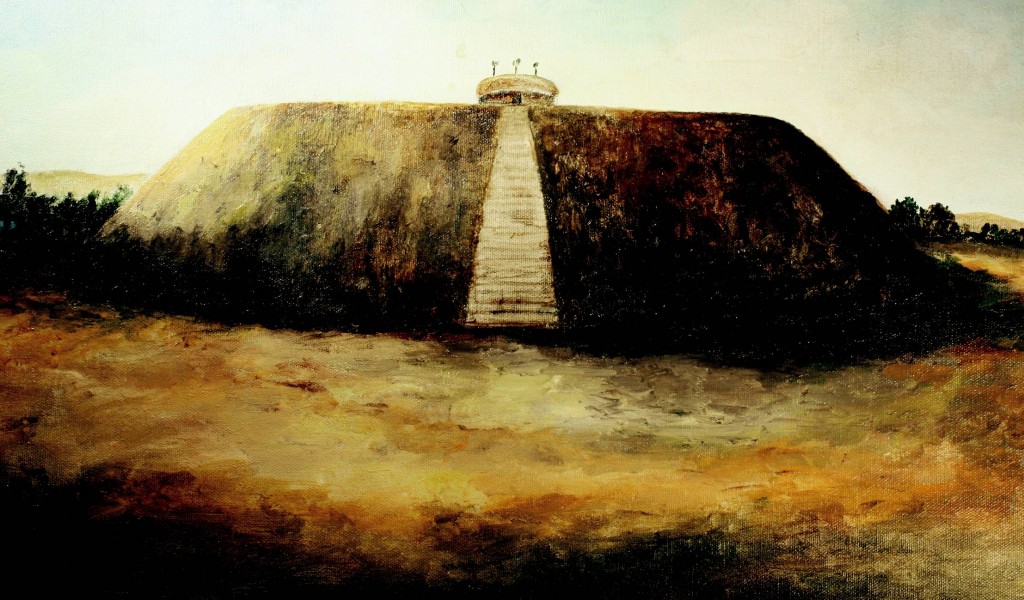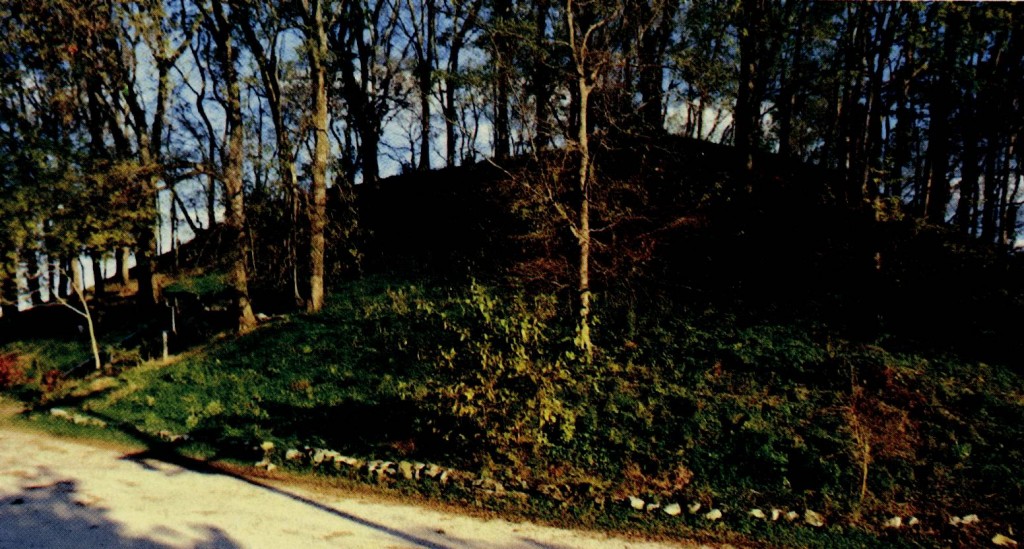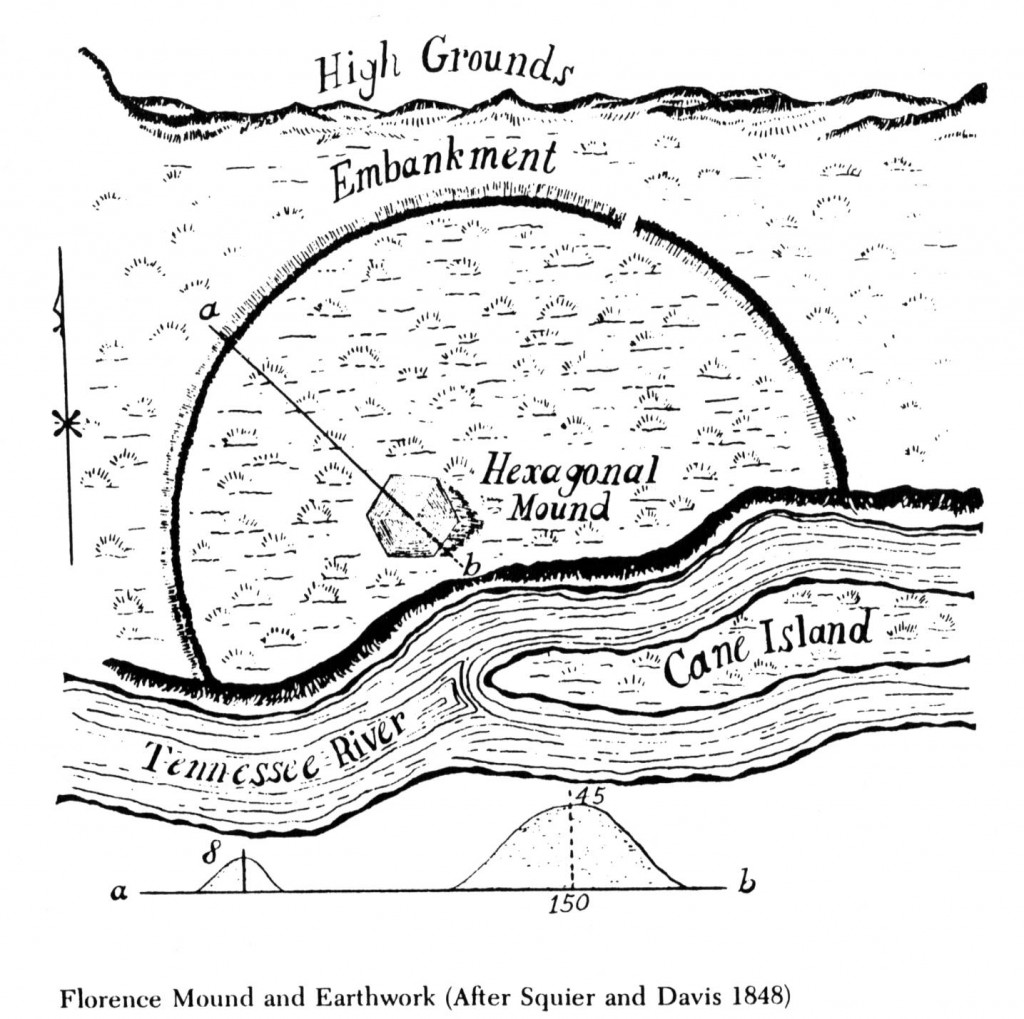From excavations led by Dr. James Knight in 1995, the large platform mound located near the present city of Florence, Alabama proved to be a late Woodland Mound rather than early Mississippian as earlier thought.

Artist’s Concept of the Indian Mound in Florence, AL in Prehistoric Times. Courtesy: Indian Mound Museum By: Dorothy McDonald
The mound is now the site of an archaeological museum built and operated by the citizens of Florence. The museum houses well coordinated displays of cultural material from local sites representing all stages of prehistoric development. This museum will probably be moved to a larger and more accessible building nearby in the near future.
The Florence mound is the highest such structure in the entire Tennessee Valley. In 1914, C.B. Moore visited this site and re-ported at that time the mound rose 42 feet above the flood plain and its base measured 310 by 230 feet. Moore excavated some thirty-four trial pits in the mound without result. He did, however, report the presence of village debris in an adjacent field, suggesting that a habitation area was associated with the mound. Moore also reported that a portion of what had once been an earthwork, now totally destroyed by erosion and industrial development, was present near the mound structure.
This earthwork was still intact during the early nineteenth century and Squier and Davis described it as follows:
“Partly surrounding the mound is a wall two hundred and seventy feet distant from its base, which extends from the main river below to a branch formed by Cane Island above, constituting a segment of a circle, the center of which would be the Tennessee River. The wall is forty feet across the top and, making allowances for the ravages of time, must have been originally from twelve to fifteen feet high. It is now eight feet in height and the wall has what appears to be a ditch on the outside.”


